Italy 2012, continued
First, one last picture from Carpi. This is the meeting room of the Collegium Ramazzini, with its decorated ceilings. Certainly not all Ramazzians come every year. The number of members in the group is capped at 180, because at the time there were 180 Cardinals in the Catholic church and THEY were able to cover the whole earth, so that’s how they decided how many scientists there should be in the collegium.
Through a lovely fluke, the people in the car with us (from Carpi to Bologna) were also going to the same hotel, so the driver dropped us both off.
Since we had just come from a modern, more austere hotel-type lodging, I found this warm creamy yellow interior of this hotel lobby a perfect antidote to the rain outside.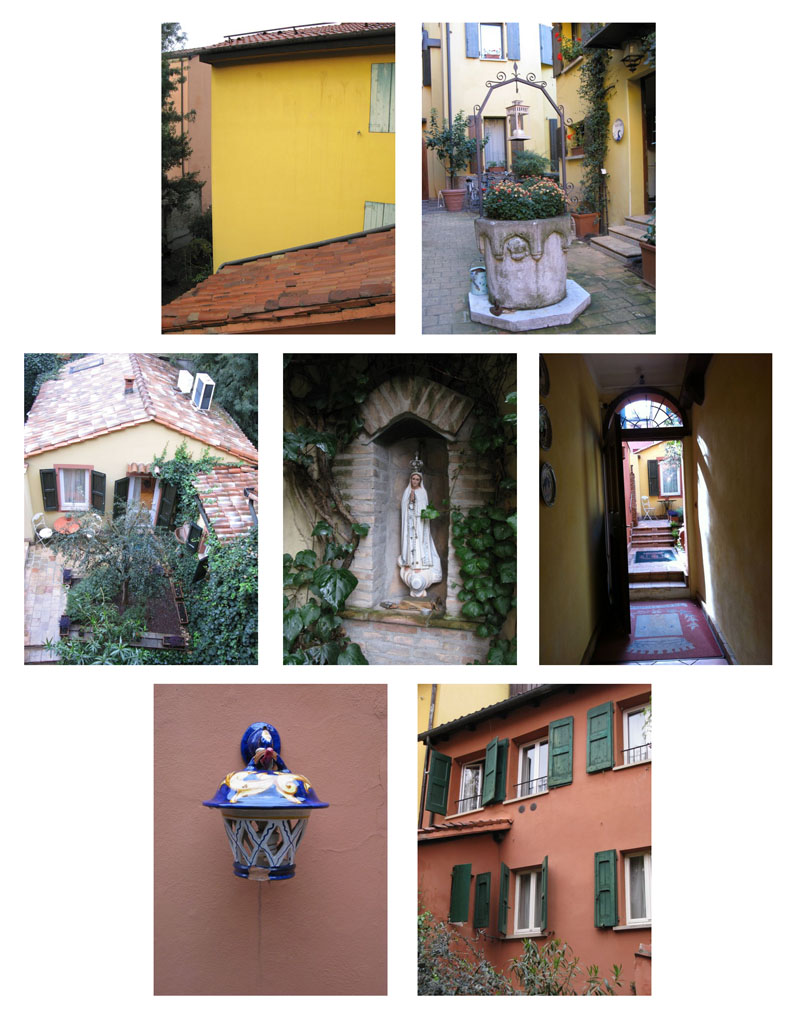 Scenes from our hotel. It’s really a conglomerate of about 5 houses, joined by two courtyards and a breakfast room, so it doesn’t feel like a “hotel.” That little “cottage” on the upper left is one of their rooms, but apparently it’s in great demand. While we had stairs to our room, the first building has an elevator.
Scenes from our hotel. It’s really a conglomerate of about 5 houses, joined by two courtyards and a breakfast room, so it doesn’t feel like a “hotel.” That little “cottage” on the upper left is one of their rooms, but apparently it’s in great demand. While we had stairs to our room, the first building has an elevator.
Our bedroom and bath. I loved the sink with its graceful shape.
These flowers were just outside the breakfast room, near the cottage. Because of the rain, the internet was spotty, so after taking a bit of a break (we still hadn’t recovered totally from jetlag), we decided to get some dinner at a place the front desk recommended, Da Nello, downtown near the main square. See the Menu post for more info (it’s coming, it’s coming!).
We walked out on the rainy streets. Daylight savings time had already come to Italy, so it was dark earlier on the clock. The first picture is right across from our restaurant on a main pedestrian drag. The second is the main plaza, Piazza de Maggiore. We walked home and called it a day, praying that the forecasts for a let-up in the rain were accurate.
After a sumptuous breakfast with homemade coffee cakes, we headed out to the first of a few churches we saw. If you’ve been traveling, sometimes you begin to get church-sights-fatigue, as I did later on in this day. And as an armchair traveler, sometimes it’s easy to feel the same, as seeing it pictures, flat and in 2D is not the same as experiencing the huge spaces, or a stone angel tucked way up high over the altar, or the glint of the sun through a window, breaking through after three days of constant rain bringing soggy tourists some relief.
But first, I loved the idea that these grand cathedrals will always need a fix-it man, hanging around to oil the hinges on massive wooden doors, as he did.
In the center it’s a pristine, and light and airy church, with minimal dark wood.
But it had an occasional dark side chapel, with only the light on the Virgin Mary centerpiece, a dim cast from a side window, and a rose of glowing red votives.
The Murano glass chandeliers were simple and beautiful. Dave and I both took photos of this large “rosette” on the wall, interested in the swirls of rigid cloth and leaning figures, frozen in space.
Every Catholic church has the Stations of the Cross, and theirs were a tableau setting, draped with heavy scarlet damask cloth.
The Magi come to adore the Christ Child: Adorazione.
This checkerboard tomb (?) was in a side chapel. I like that with all this space, this huge and soaring church, they still have a hard time finding space to store things, so tuck them in a side chapel. (Just a guess.)
The organ and the Murano chandeliers. This reminded me a little of the church in Munich that is all in white. Of course, I can remember both of these churches because photos were allowed, although Dave said the fix-it man came and scolded him for taking photos. In many churches we went into there was a sign posted, although it was unclear if it meant no photos. . . or merely no flash.
Around the corner from the altar was this side chapel, a rosette on its ceiling, and if you dropped your 50-cent Euro coin in the turnstile, you were permitted to advance. If only going to heaven was so cheap or easy.
First up, the choir seats, where dignitaries or singers sit with intricately inlaid scenes at their backs, made of different veneered woods.
And then out into the cloisters, with hedged criss-cross rows subdividing the courtyard with a giant X. Sunshine is promised. We can almost feel it.
This almost makes you want to redesign your yard and outdoor patio, doesn’t it?
We were the only tourists in the cloisters.
Backside of the church.
Bell tower.
The sun is out! We are amazed to see this side of the cloisters start to glow like it was lit from within, until we figured out why: it was laid with red carpet. Still, I loved the effect.
Obviously NOT on the red-carpet aisle, but it was still lovely.
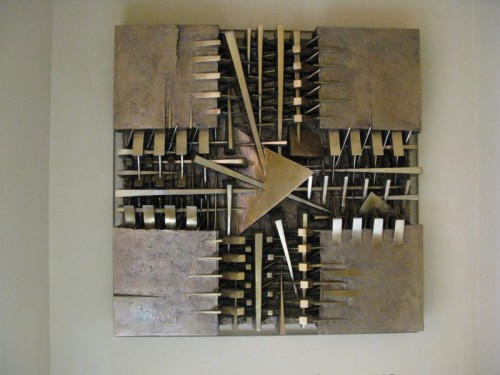 An unusual sculpture in one of the hallways on the way out. It reminded us of the sculpture we saw in the courtyard at the Vatican, and which Matthew had on his family blog.
An unusual sculpture in one of the hallways on the way out. It reminded us of the sculpture we saw in the courtyard at the Vatican, and which Matthew had on his family blog.
We came full circle back out to the space in front of the church and the sky had darkened up a bit, throwing this statue of Saint Domenic into relief.
Sun again! I sound like a nut, but really, it’s so nice to see things without holding an umbrella over your head.
St. Domenic’s tomb, I believe. Now I’ve really got to redo the backyard.
With the sun out, the colors of Bologna start to come alive, with ochres, reds, golden yellows. It really is a beautiful city.
Here’s the men-door-keyholes, similar to what I saw in Carpi, but these are in much better shape. Love the door handles.
Dave took this one. I stopped to try and photograph the dog, and he was looking right at me, but the windows were all misty, so this is the better shot. Over and over it was reinforced that this was a city, not of tourists, although there were certainly accomodations for us, but a city of working and shopping and normal people.
Here are the two towers, from a shot Dave took later in the day. In the morning, we were coming at these towers from the other side. They have names: Torre Garisenda and Torre degli Asinelli. The shorter one used to be as tall as the one you see looming over the city, but was demed unsafe some years ago because of the leaning, and was lopped off. The taller one can be climbed. It’s something like 60 stories.
This is how we saw them, dissected by power lines.
And the next morning, we saw them this way, having climbed a small mountain to get a view. We laughed to see the radio/cell transmission equipment on the top, certainly not very visible from the ground. A good use of a tall space, I suppose, but fairly incongruous. Okay, back to the streets.
We’re on our way to San Stefano, a collection of seven medieval churches. More coming in the next post.
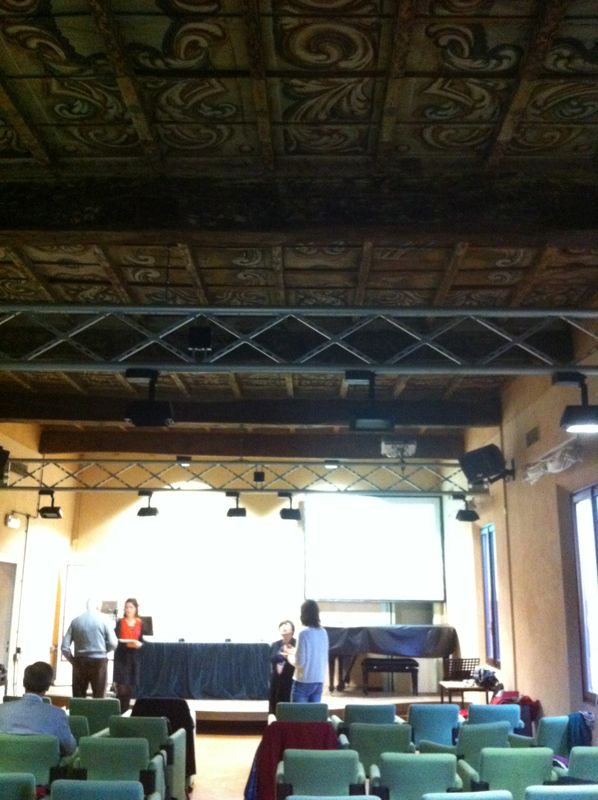
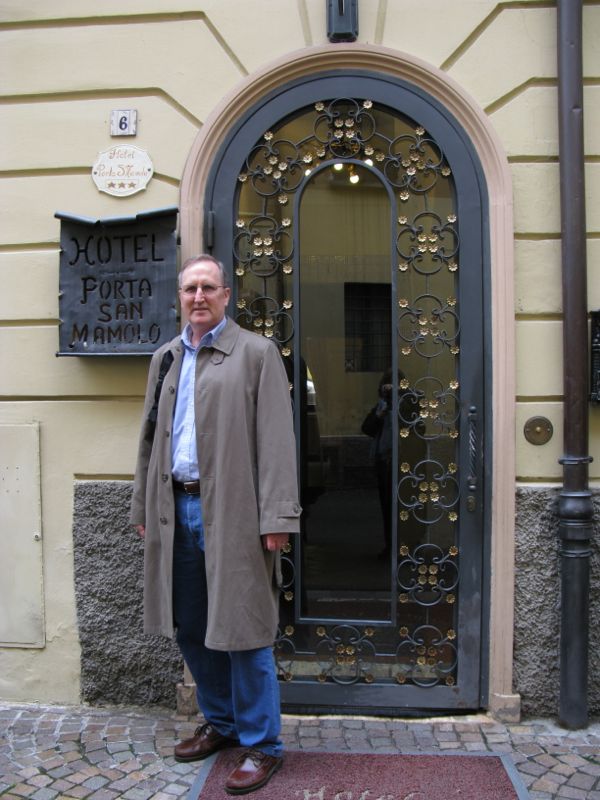
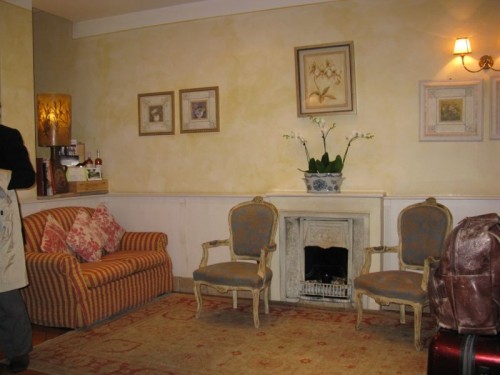
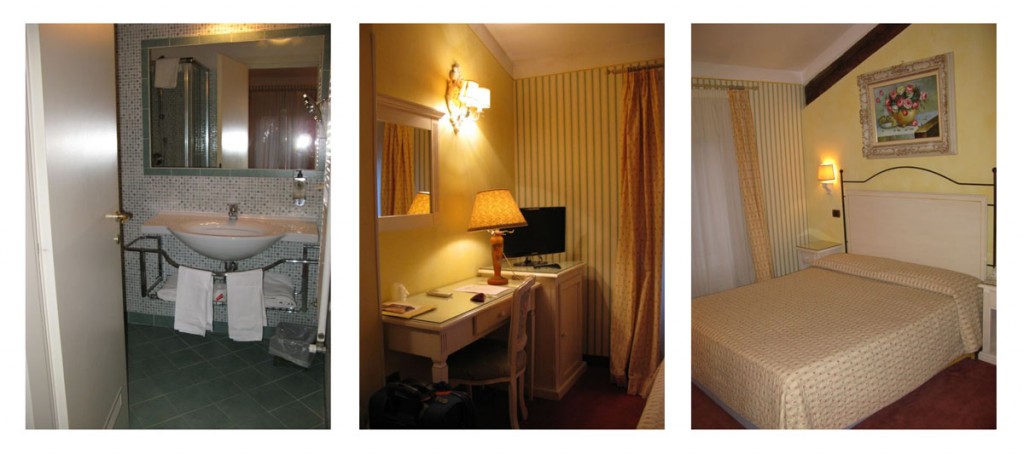
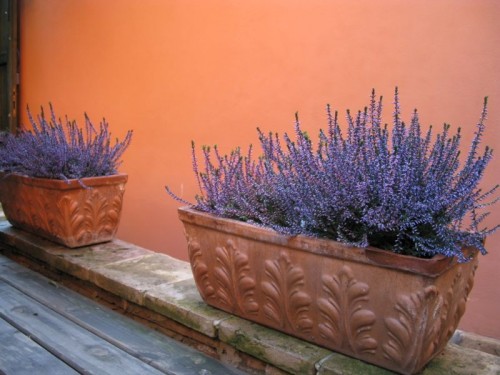
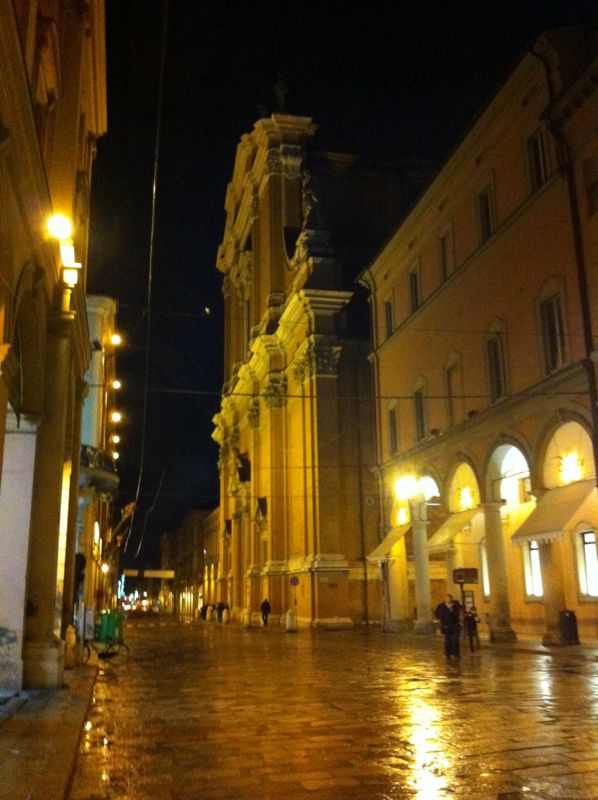
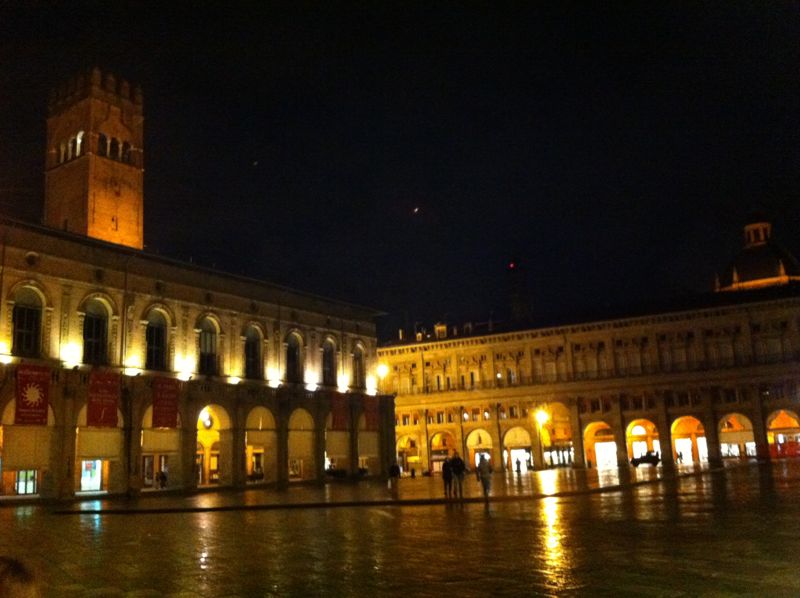
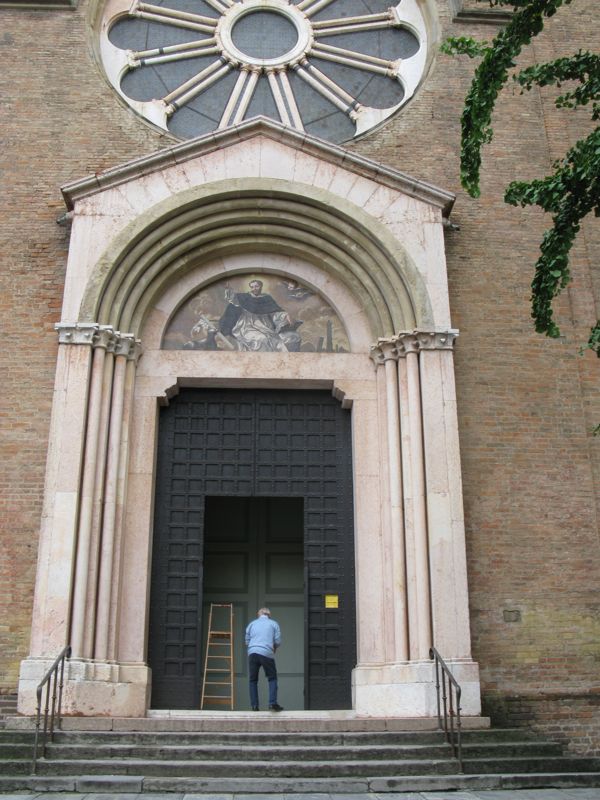
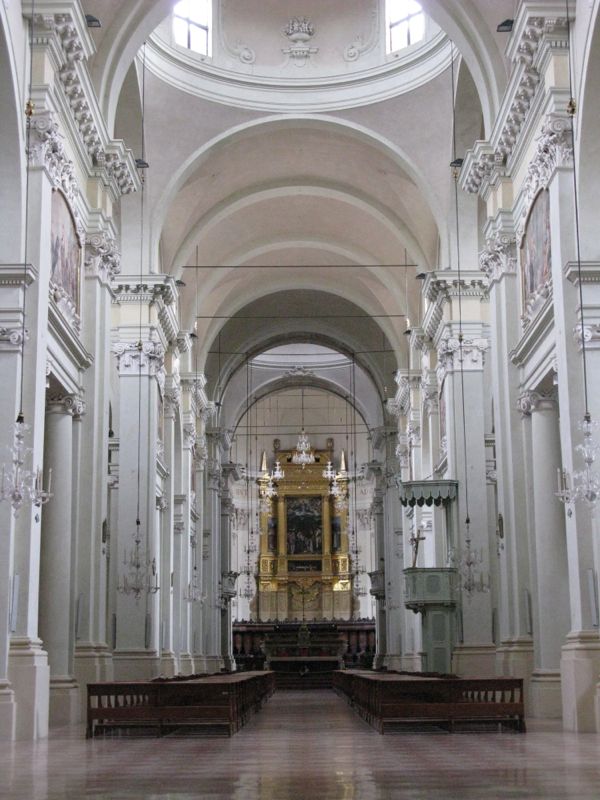
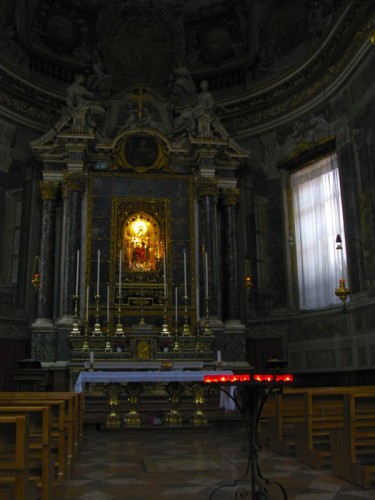
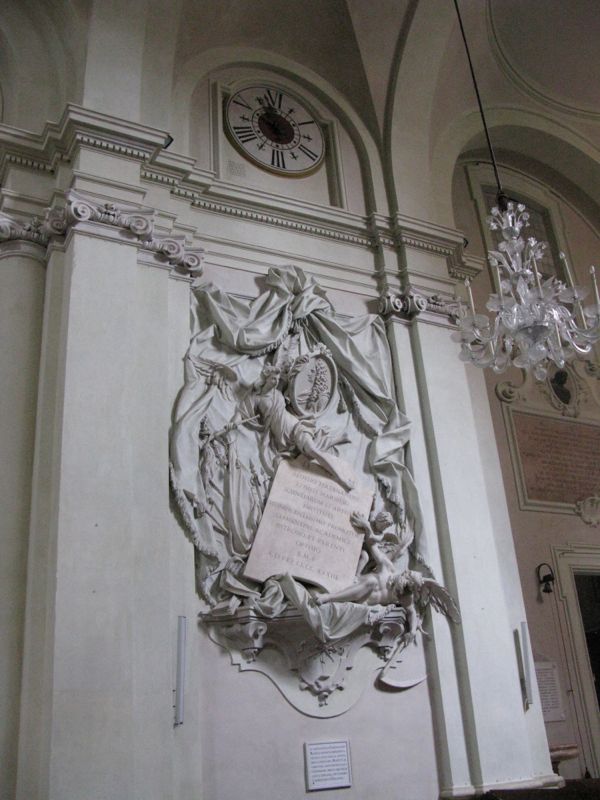
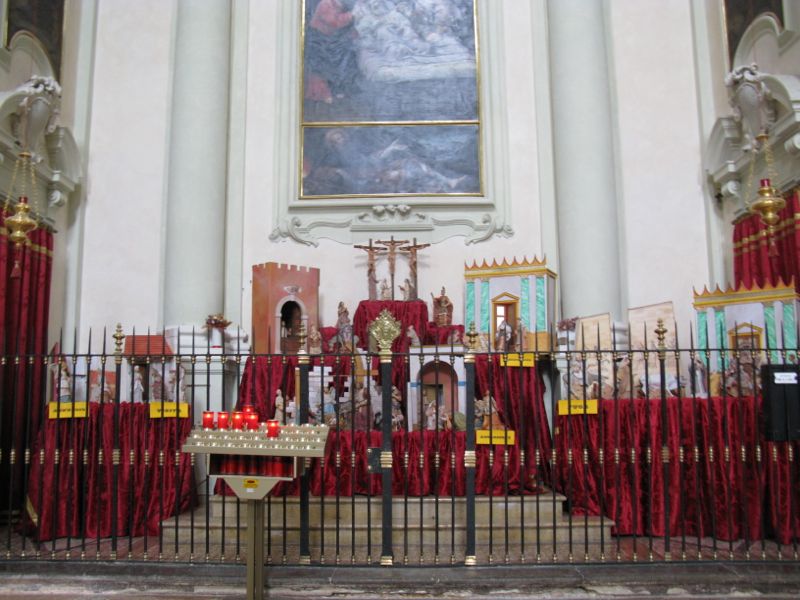
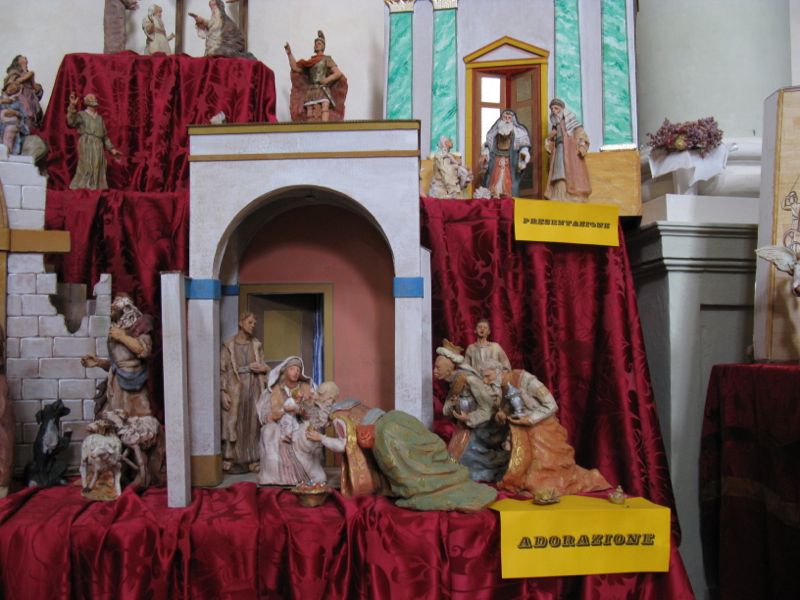
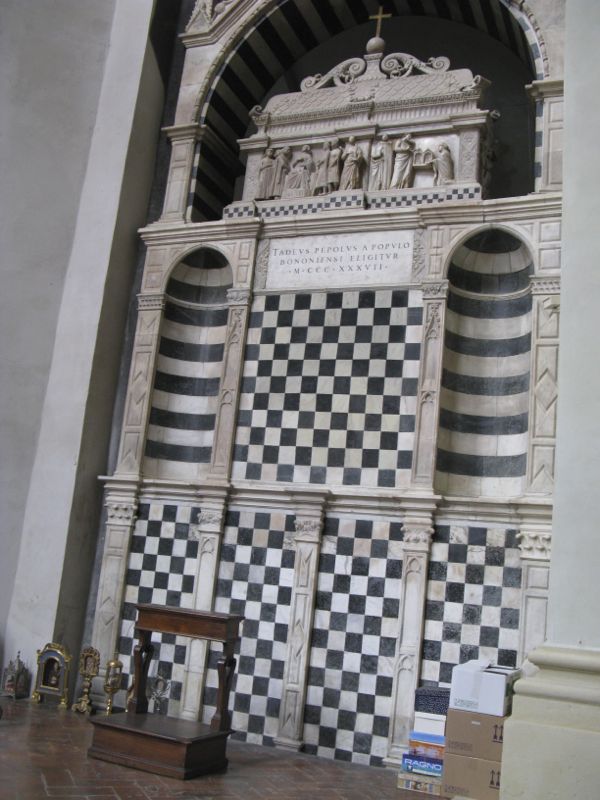
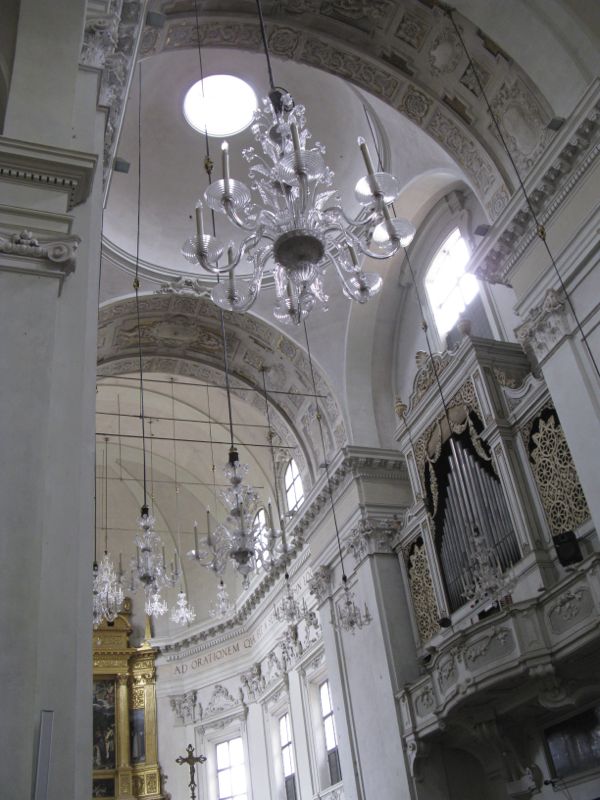
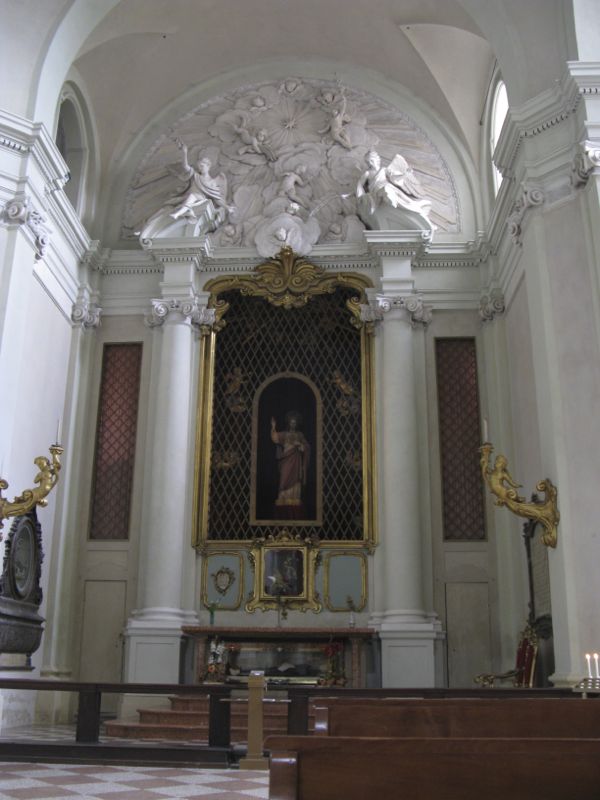
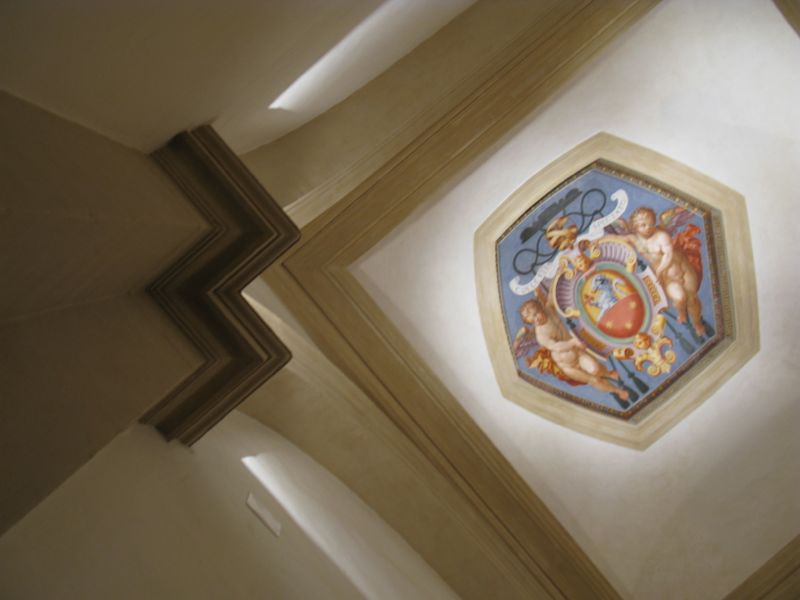
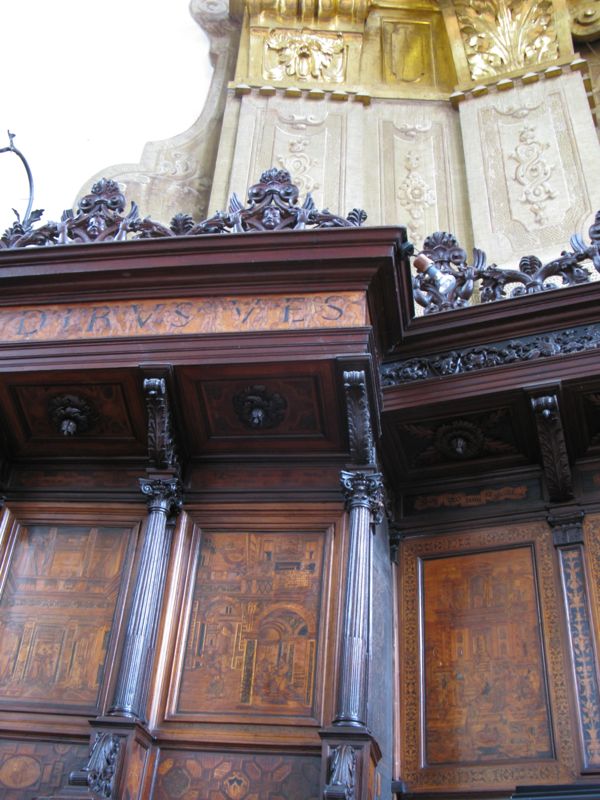
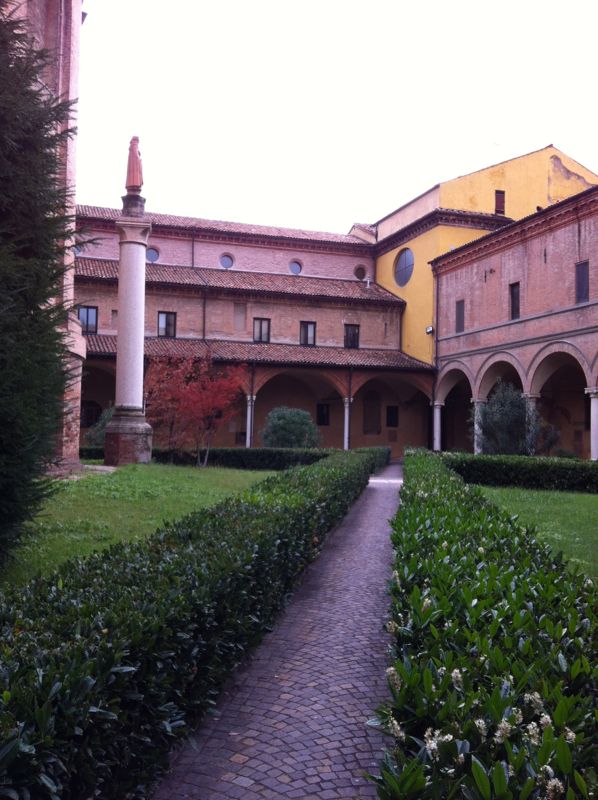
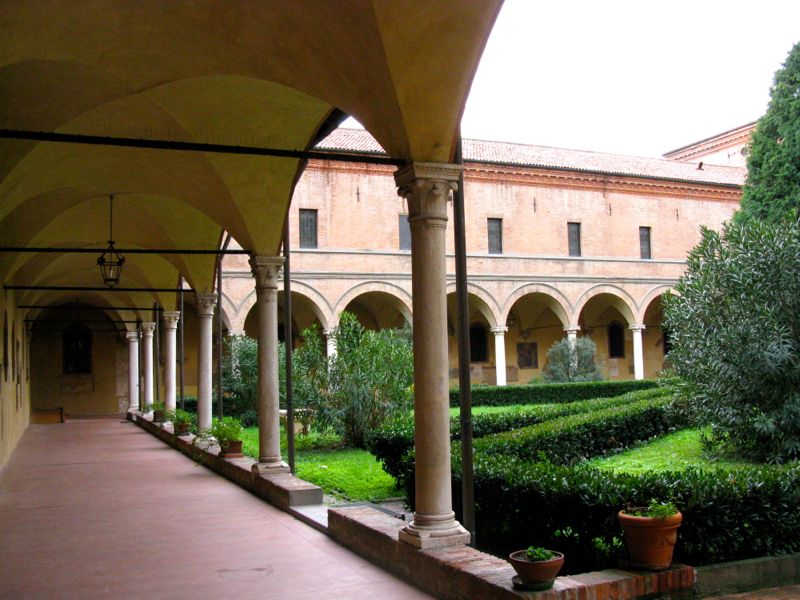
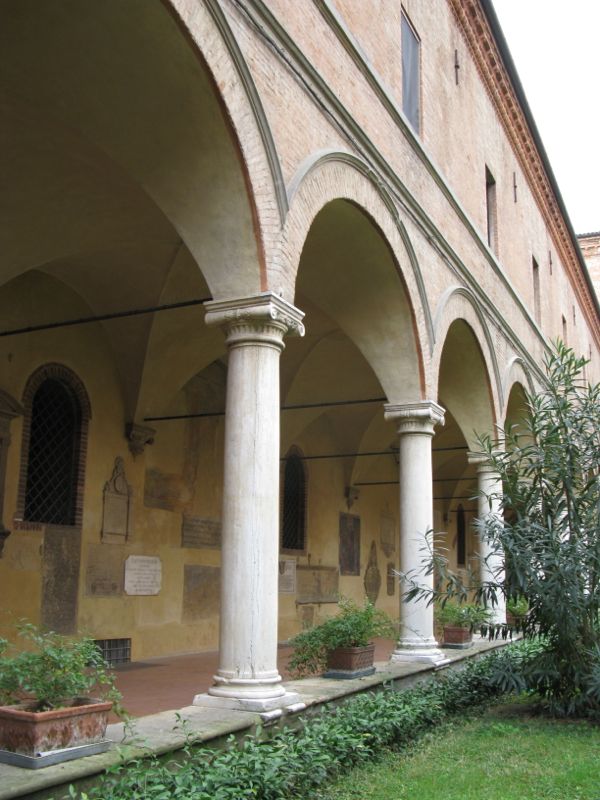
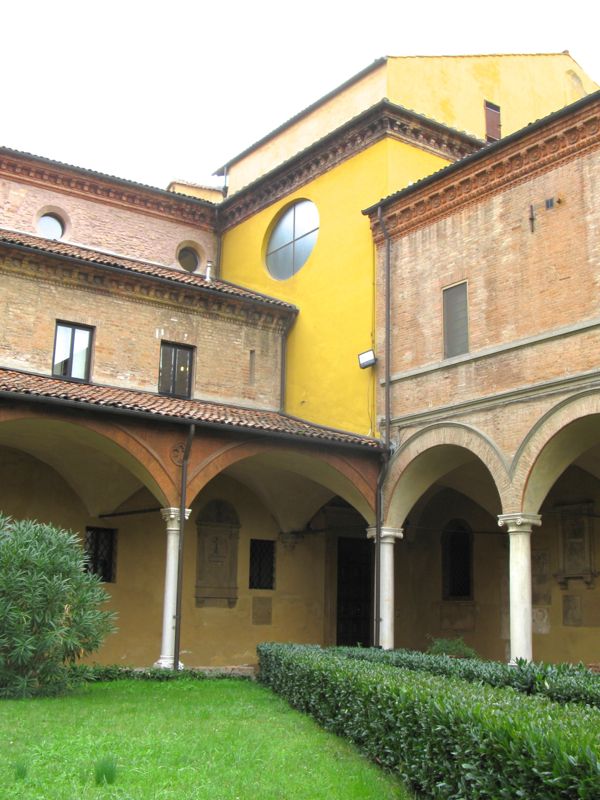
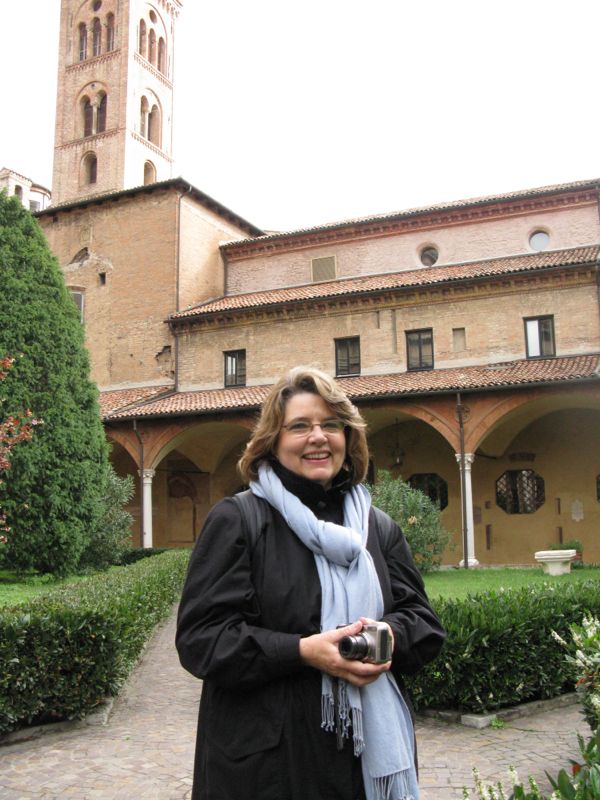
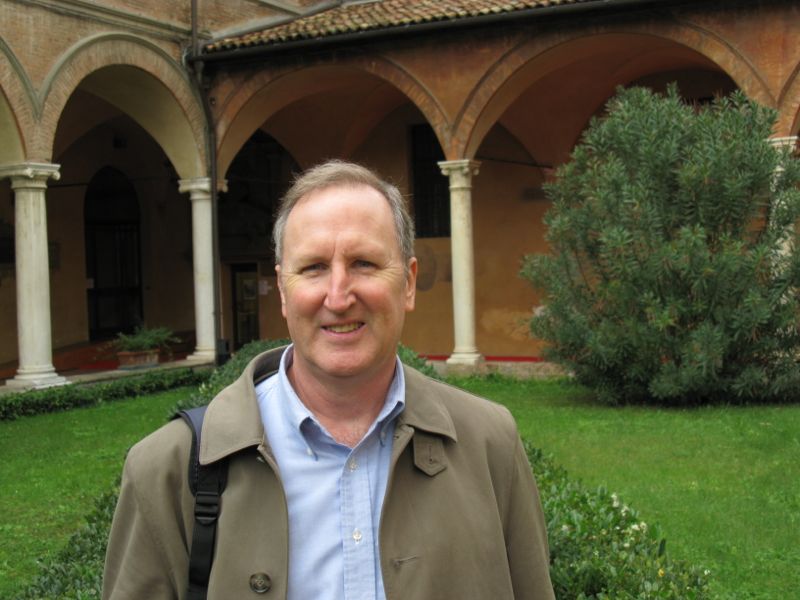
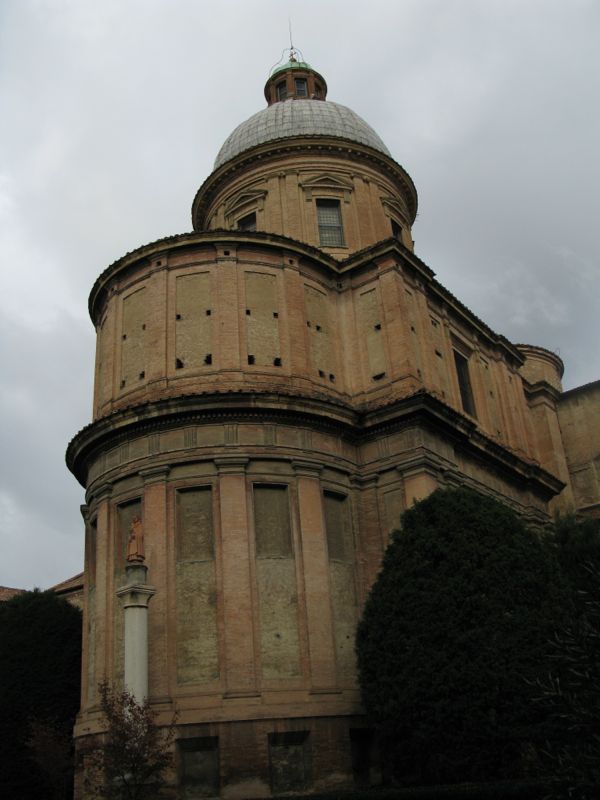
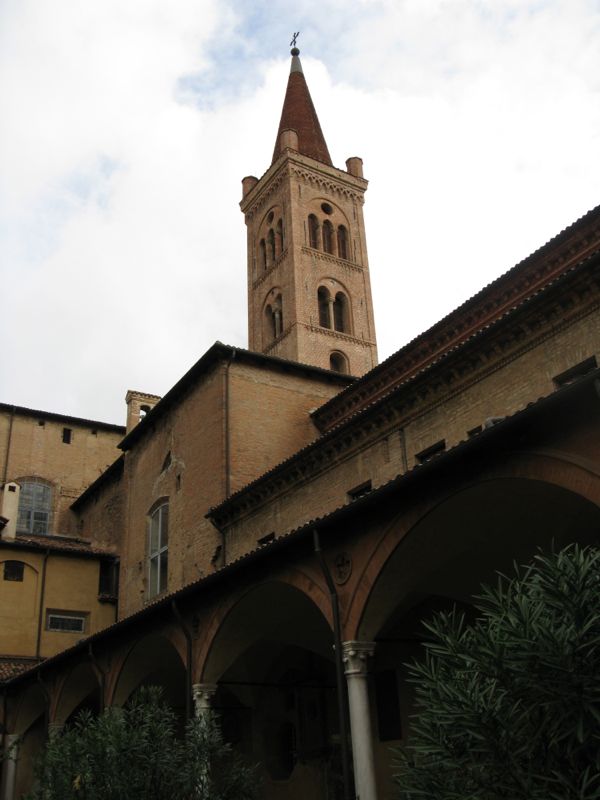
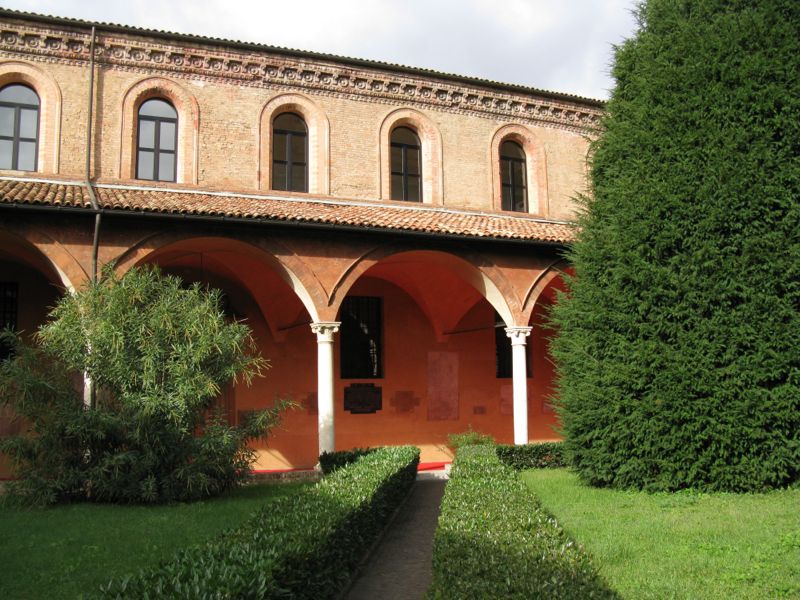
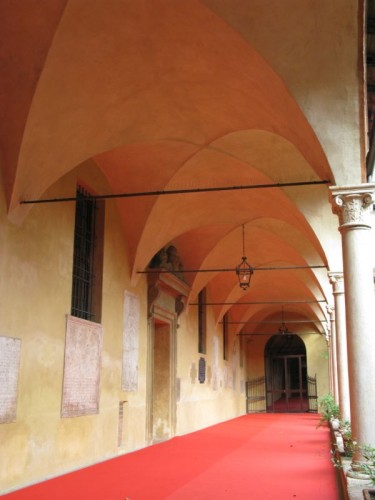
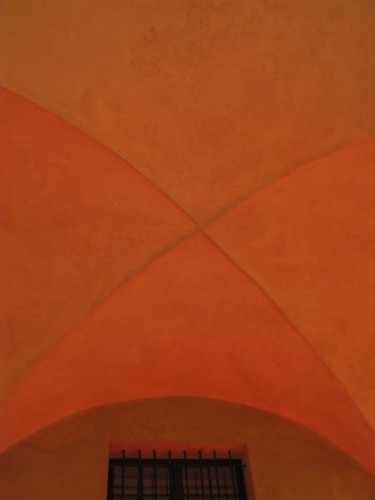
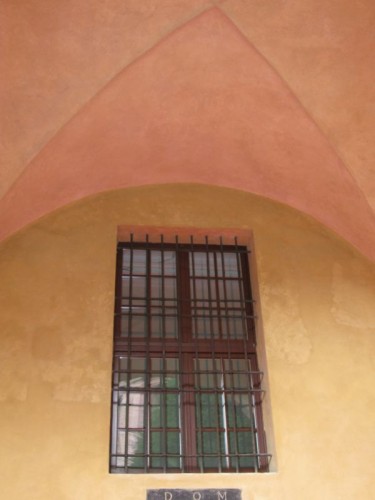
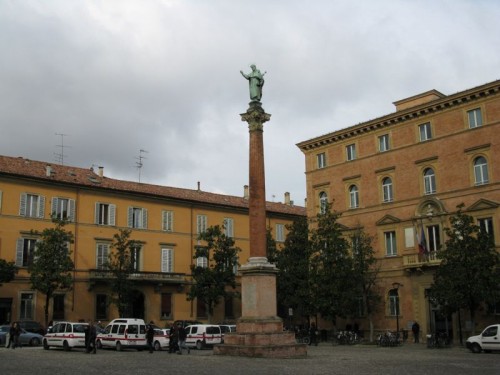
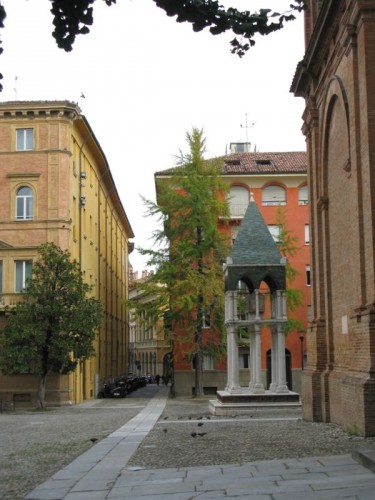
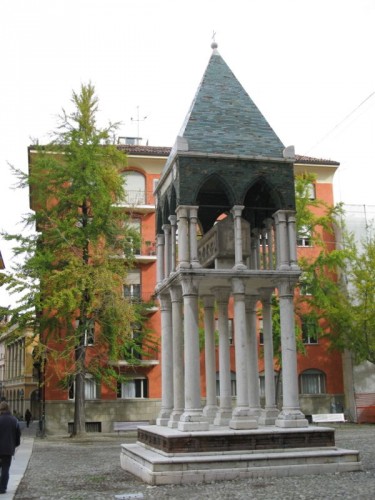
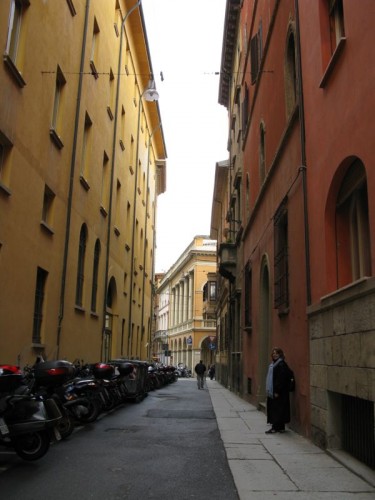
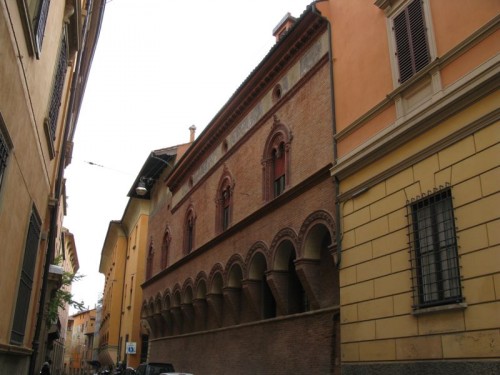
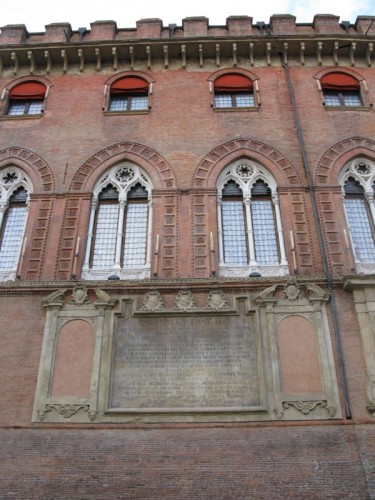
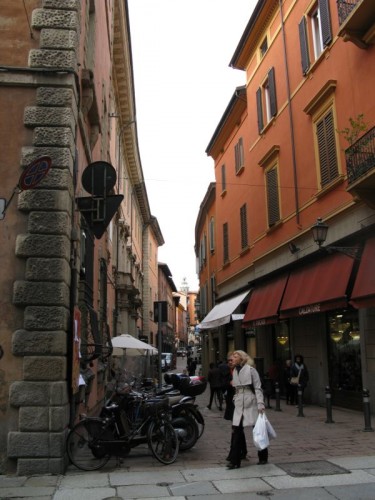
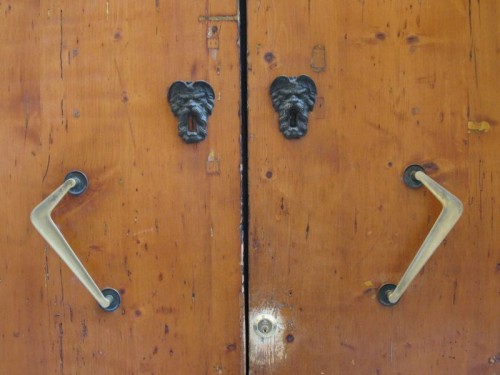
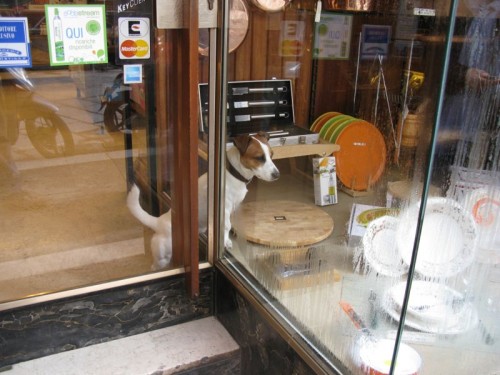
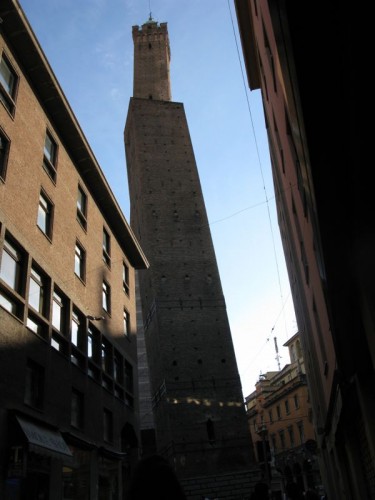
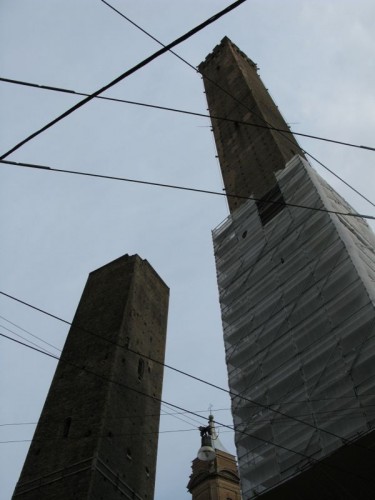
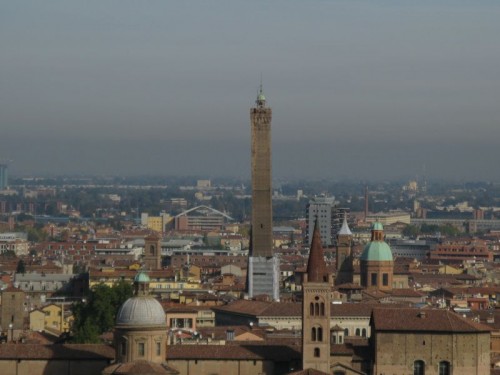
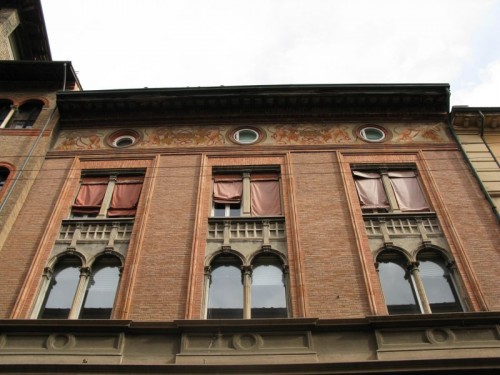
You have some beautiful photos. I love the churches with white interiors, especially in a city where the outside architecture is as colorful as it is in your pictures. The contrast makes it all the more stunning. That taller tower is pretty magnificent.